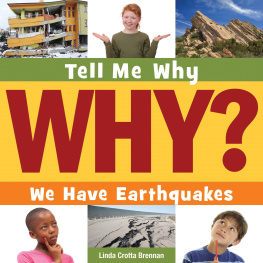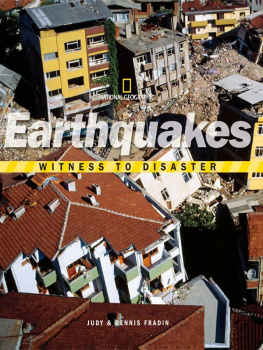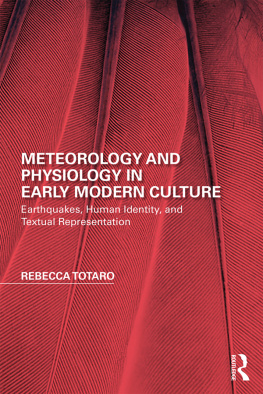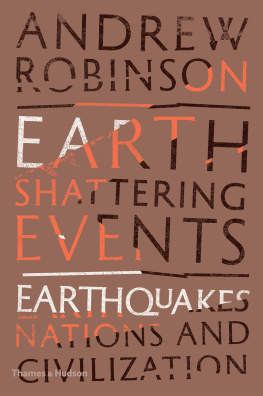Thinking on Earthquakes in Early Modern Europe
This book is the first extensive study of ideas on earthquakes before the Lisbon earthquake in 1755. The earthquake had a deep impact on European culture, and the reactions to it stood in a long tradition that, before this study, had yet to be explored in detail.
Thinking on Earthquakes investigates both scholarly theories and views that were propagated among the early modern European population. Through a chronological approach, Vermij reveals that in contrast to the Ancient and medieval philosophers who suggested rational explanations for earthquakes, supernatural ideas made a powerful comeback in the sixteenth century. By analysing a variety of sources such as pamphlets, sermons, and treatises, this study shows how changes in the ideas on earthquakes were a result of social and political demands as well as from improvements in the means of communication, rather than from scientific methods. Thus, Vermij presents an illuminating case for the production of knowledge in early modern Europe.
A range of events are explored, including the Ferrara earthquake in 1570 and the Vienna earthquake in 1590, making this study an invaluable source for students and scholars of the history of science and the history of ideas in early modern Europe.
Rienk Vermij obtained his PhD in 1991 at Utrecht University, the Netherlands, and is presently Professor at the Department of History of Science of the University of Oklahoma. He has published on several aspects of early modern intellectual culture. Among his books is The Calvinist Copernicans. The Reception of the New Astronomy in the Dutch Republic 15751750 (2002).
First published 2021
by Routledge
2 Park Square, Milton Park, Abingdon, Oxon, OX14 4RN
and by Routledge
52 Vanderbilt Avenue, New York, NY 10017
Routledge is an imprint of the Taylor & Francis Group, an informa business
2021 Rienk Vermij
The right of Rienk Vermij to be identified as author of this work has been asserted by him in accordance with sections 77 and 78 of the Copyright, Designs and Patents Act 1988.
All rights reserved. No part of this book may be reprinted or reproduced or utilised in any form or by any electronic, mechanical, or other means, now known or hereafter invented, including photocopying and recording, or in any information storage or retrieval system, without permission in writing from the publishers.
Trademark notice: Product or corporate names may be trademarks or registered trademarks, and are used only for identification and explanation without intent to infringe.
British Library Cataloguing-in-Publication Data
A catalogue record for this book is available from the British Library
Library of Congress Cataloging-in-Publication Data
Names: Vermij, Rienk, author.
Title: Thinking on earthquakes in early modern Europe: firm beliefs on shaky ground / Rienk Vermij.
Description: Milton Park, Abingdon, Oxon; New York: Routledge, 2021. | Includes bibliographical references and index.
Identifiers: LCCN 2020028663 | ISBN 9780367492182 (paperback) | ISBN 9780367492199 (hardback) | ISBN 9781003045083 (ebook)
Subjects: LCSH: EarthquakesEuropeHistory16th century. | EarthquakesEuropeHistory17th century. | Natural disastersEuropeHistory. | EarthquakesSocial aspects. | Civilization.
Classification: LCC QE536.2.E85 V47 2021 | DDC 511.22094/09031dc23
LC record available at https://lccn.loc.gov/2020028663
ISBN: 978-0-367-49219-9 (hbk)
ISBN: 978-0-367-49218-2 (pbk)
ISBN: 978-1-003-04508-3 (ebk)
Typeset in Bembo
by codeMantra
This book is the result of research that spans several decades. It all started in 1997 with a fellowship at the Herzog August Library at Wolfenbttel, Germany, which offered me excellent research opportunities. At the time, this resulted in several articles, but far from exhausted the subject. The project kept me occupied, but because of many other projects and obligations, it proceeded only slowly. Fortunately, my present employer, the University of Oklahoma, allotted me generous research time, including a summer stipend. The Descartes Center at Utrecht offered a welcoming environment during my sabbatical in 20132014. I owe gratitude to these institutions and apologies if they had to wait a bit long for the final result.
The long history of this project had some unforeseen consequences. When I started many years ago, digitalization was in its infancy. Because many sources were rare and often hidden in far-away places, studying them was expensive and demanded extensive travel. Since then, digitalization has made many works better accessible. This made my research much easier and has allowed me to fill in several gaps in my narrative. On the other hand, some of my earlier choices in selecting my material suddenly seemed somewhat less fortunate. That made for some extra work, although I hope I can be forgiven that I did not start all over from scratch. The overview is certainly not all-comprehensive. There is hardly a phenomenon on which has been written more than on earthquakes, and even today, many sources are still unavailable or hard to come by. At some point, one has to decide that what one has is good enough. Still more material might have resulted in a bigger, but not necessarily a better book.
In spite of all the digitalization, in many cases, I was dependent upon paper copies. I owe a great debt to the staff of the many libraries where I consulted materials in the course of the years. This is particularly true for the staff of the Herzog August Library at Wolfenbttel and of the History of Science Collections at the University of Oklahoma. Also, I owe gratitude to the city archive of Schaffhausen and the central library of the canton Lucerne for obligingly sending me materials.
An embarrassing consequence of the long time the project took me is that I have lost track of many persons who in those years have been of assistance. As I discovered during my research, the history of earthquakes fascinates many people and many colleagues took an interest in the project. They often spontaneously sent or offered information, pointed to literature, suggested sources, or helped me out with unfamiliar languages. It is impossible to mention or even to recall everybody who in some way or other offered assistance or encouragement, and it is therefore with some uneasiness, and with sincere apologies to everybody I overlooked, that I recall the following names. A special thanks should go to my colleague at Oklahoma, emeritus professor Ken Taylor, who read and commented on the entire manuscript. Others whom I remember are, in alphabetical order, Ann Blair, Kerrewin van Blanken, Jan Willem Buisman, Patrizia Conforti, Bruno Figliuolo, Georges Maurice Frechet, Willem Frijhoff, Manfred Jakubowski-Tiessen, Eric Jorink, Maija Kallinen, Hartmut Lehmann, Ulrich Lffler, Kerry Magruder, Dieter Merzbacher, Cornelia Niekus-Moore, Augusto Placanica, Jo Spaans, and Joachim von der Thsen. I am also happy for the support of my colleagues at the Department of History of Science at Norman, Oklahoma, and of the Descartes Center at Utrecht University, as well as for the stimulating discussions with the many fellows at Wolfenbttel during my stay in 1997 and at several later occasions. I am responsible for the final result, but I would not have gotten there without everybodys support.
Translations into English are mine, unless another source is indicated. For biblical quotes, I used the King James Version as being closest to the period.
Part of this research was made possible by a generous grant from the Herzog August Library, Wolfenbttel, Germany.









